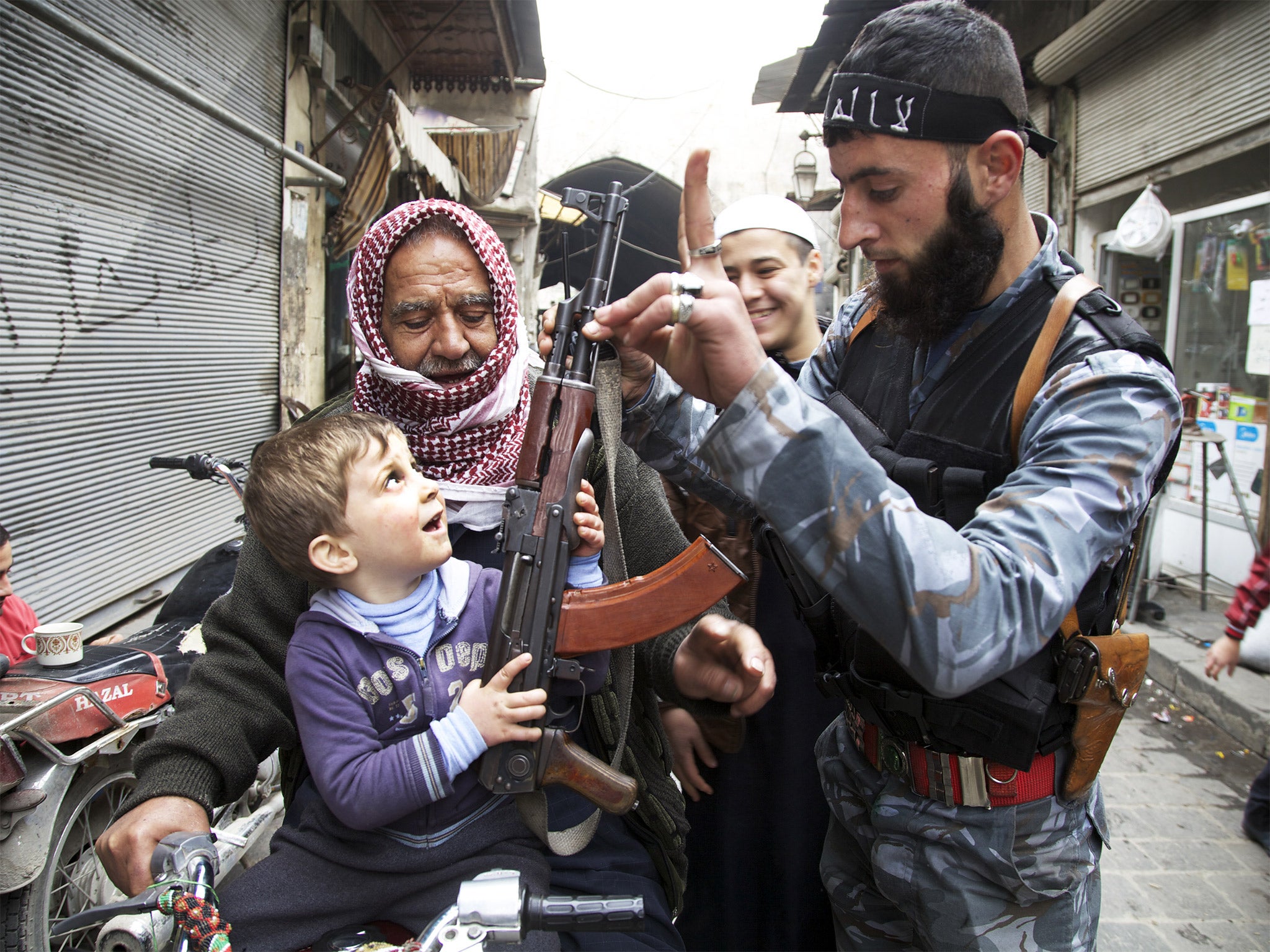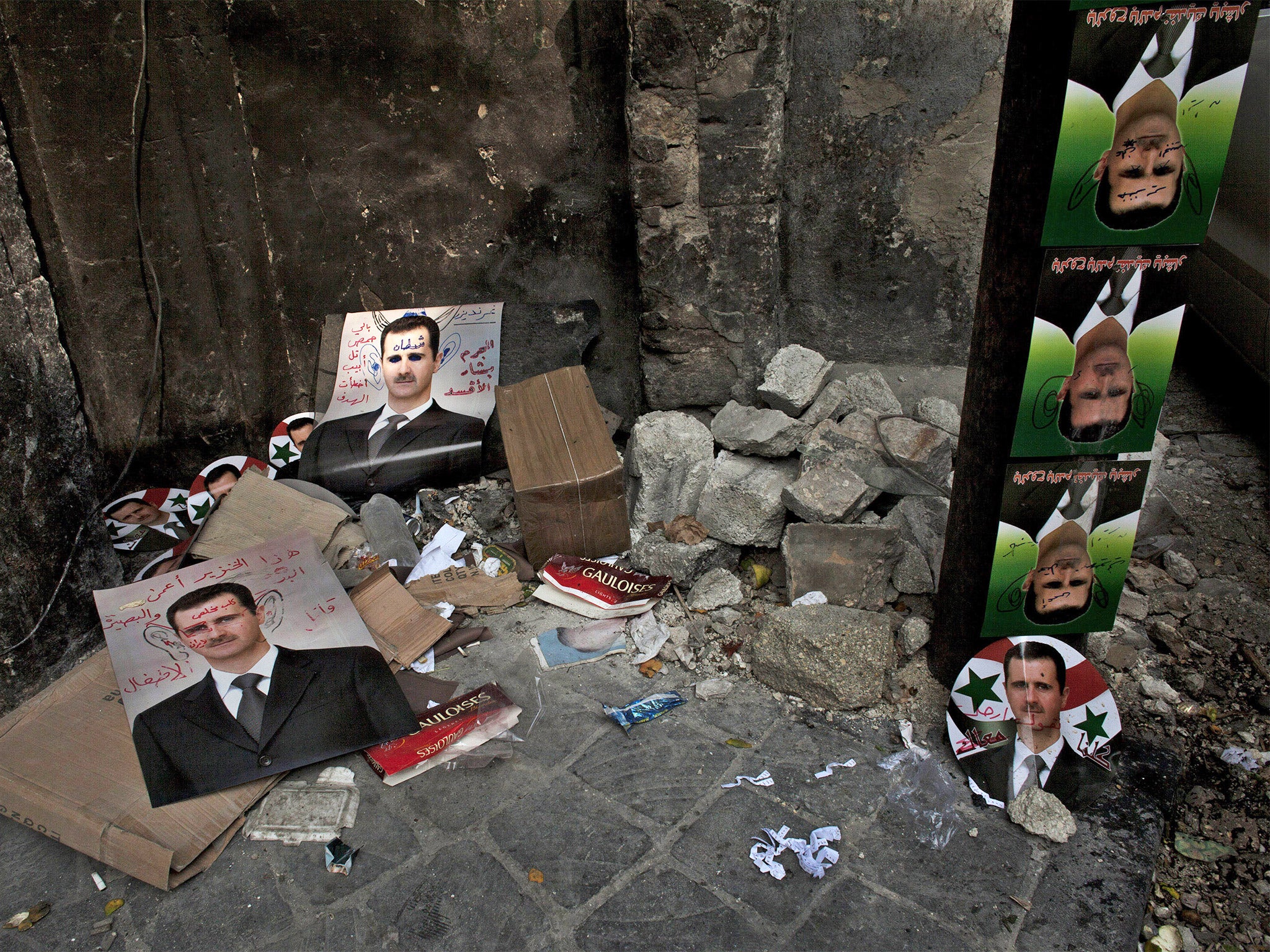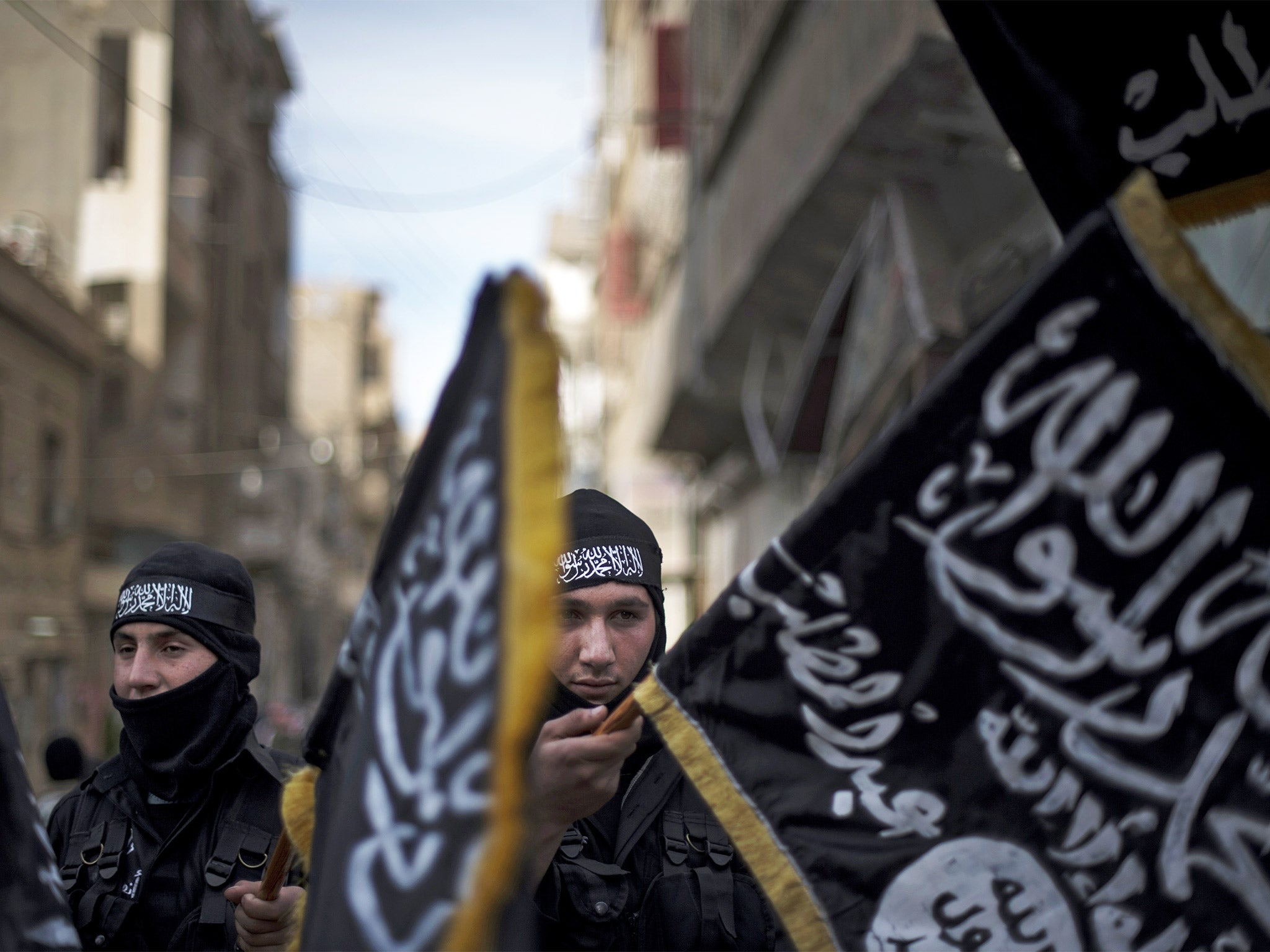How Syria lost its humanity: Why has the civil war been marked out by almost medieval acts of savagery?
The scale of the brutality in the war-blighted country is straining the tolerance of even the most hardened observers. Kim Sengupta tries to find some sort of logic to the growing levels of nihilistic violence and wanton bloodshed

Your support helps us to tell the story
From reproductive rights to climate change to Big Tech, The Independent is on the ground when the story is developing. Whether it's investigating the financials of Elon Musk's pro-Trump PAC or producing our latest documentary, 'The A Word', which shines a light on the American women fighting for reproductive rights, we know how important it is to parse out the facts from the messaging.
At such a critical moment in US history, we need reporters on the ground. Your donation allows us to keep sending journalists to speak to both sides of the story.
The Independent is trusted by Americans across the entire political spectrum. And unlike many other quality news outlets, we choose not to lock Americans out of our reporting and analysis with paywalls. We believe quality journalism should be available to everyone, paid for by those who can afford it.
Your support makes all the difference.Three years ago, when President Bashar al-Assad’s position in Syria looked less secure, Abu Sakkar was among those the West regarded as a "moderate" rebel and a highly effective one at that. Omar al-Farouq – his khatiba, or brigade – was praised for confronting Islamic extremists. They had even arrested and executed the leader of a group of foreign jihadists who were then a new presence in the increasingly bitter strife.
Khalid al-Hammad, which was his real name, was a jovial character. Any squeamishness we may have had being in the company of a killer was tempered by the fact that the man he had executed, Mohammed al-Absi, was himself a murderer and believed to be responsible for the kidnapping of the journalists John Cantlie and Jeroen Oerlemans – one British, one Dutch – who were subsequently rescued.
In the autumn of 2012, Cantlie went back to Syria with an American colleague, Jim Foley. In November, he was kidnapped again, as was Foley, and both ended up in the hands of Isis.
Foley, who was a friend to many of us, was beheaded; Cantlie now appears in Isis promotional videos – coerced, it is believed, into taking part. First seeing them came as a shock.
But a video featuring Sakkar – which appeared in May 2013, seven months after we had first met him – led to an even bigger shock: shock and disgust, which was expressed around the world. Sakkar was filmed eating the freshly cut lungs of a dead government soldier, shouting, while mutilating a corpse: “I swear to God we will eat your hearts and your livers, you soldiers of Bashar the dog...” A gunman alongside grinned: “It looks like you’re carving him a Valentine’s heart.”

A few of us journalists phoned each other: “Was that really him? Sakkar? What happened?” The man himself sought to explain to the BBC’s Paul Wood in an interview a little later: “Put yourself in my shoes. They took your father and mother and insulted them. They slaughtered your brothers, they murdered your uncle and aunt. They slaughter your neighbours,” he said. “We have to terrify the enemy, humiliate them, just as they do us. I didn’t want to do this; I had to. Now, they don’t dare be wherever Abu Sakkar is.”
The violence in Syria has since then continued relentlessly, with an ever rising body count. Even by the vicious standards of this conflict, the burning alive of the Jordanian pilot Moath al-Kasasba was stunning in its savagery. But it followed all manner of horrific executions – by beheading, stoning and being thrown off high buildings – charted in “snuff” videos coming out of Syria and Iraq; they generate expressions of horror, if little expectation of the atrocities ending.
But those carrying out these acts have not suddenly appeared out of nowhere. What we are seeing is people who would have been in our realm of normality not so long ago, now embracing extreme violence. This, of course, has happened in many conflicts in recent history, but in the carnage of Syria, the descent into barbarity has been remarkably swift.
The latest Cantlie video, released this week, had scenes from the town of Al-Bab, and I studied the brief footage with curiosity. Having spent some time in the town since the uprising began, I recall the friendship and protectiveness shown by the people at times of great danger.
By the summer of 2012, Al-Bab had become a focal point of protest against Bashar al-Assad. I was with a crowd, many of them unarmed, when they stormed a government military base from which artillery rounds were being lobbed on to the population. I also accompanied their fighters during the ferocious battle for Aleppo later that year, when the town provided the largest contingent on the rebel side.
The town was later taken over by Jabhat al-Nusra, an al-Qaeda affiliate, and then by Isis – and both these groups started off by taking over the military barracks and bombarding the population, just as the regime forces had done. Then, on each occasion, they occupied the town. Local fighters drove off the extremists a number times, but were ultimately overwhelmed by numbers.
The harshest Islamic rule was then imposed on an already conservative society. A shisha café where we relaxed after a day of air strikes and tank fire in Aleppo – with its ever-hospitable young owner, Mohammed, who would laughingly talk about opening up branches in London – was closed down.
But this was a minor act in a process of purification compared with the introduction of whipping, amputations and hangings that followed. The young activists, the students, lawyers and doctors who used to debate about the future democratic shape of Syria late into the night in Mohammed’s café disappeared. Some were killed or imprisoned, others fled across the border into Turkey. But not all of them; a very few joined the persecutors.
One, 26 year-old Abdulhamid, a shop assistant, made the jihadist journey through increasingly hard-line groups. I met him in the Aleppo province in the autumn of 2013, when the US was threatening to bomb the regime after the chemical attack on Al-Ghouta. (This was dropped after the Russians brokered a deal under which President Assad was supposedly giving up his WMD arsenal.)
Abdulhamid had fought with a small band under the black banner of al-Nusra, which was then in the process of merging with a then little known group coming out of Iraq called Isis. (They were to have a violent split later.) Now, at a village near the town of Mara, Abdulhamid described in detail how he had executed rafidis, a pejorative term used by Sunnis for both the Shias and their offshoot, the Alawites, from which Syria’s ruling elite is drawn.
When I reminded him of his past views – how there should be room for all denominations and political persuasions in his country – there was righteous indignation. He was furious at the American failure to act over the chemical attacks, a constant complaint in opposition-held areas at the time, and at the hypocrisy of the West, including its media.
“People in Europe and America want us to fight Bashar, but where is the help? How many people have died waiting for them to help? You have seen what Bashar’s people have been doing. Then people come and lecture us.
“ The rafidis I killed were dogs. I am proud to have killed them. It is easy to kill a man when you hate him so much. Others used their knives. I shot them; some of them I shot several times to make them suffer. I have no regrets, no regrets,” he declared, glaring around the roadside shack. The others in there looked away.
Abdulhamid and his men took us to a row of five graves. “Spies. One of them was quite young, maybe 12. But a baby snake grows up to be a big snake, so better to kill when it’s young,” said one of the fighters with a shrug.
Four little boys, playing nearby, came over and started shouting revolutionary slogans, eagerly waiting in line for a chance to hold the men’s Kalashnikovs, which were almost as big as they were. My translator asked what they thought of the boy buried there.

“He was a traitor. He deserved to be killed,” piped up one. Later, out of earshot, the translator whispered: “What have we done to these kids?”
I met Abdulhamid again early last year in the Turkish border town of Gaziantep. His long beard had been trimmed and he had changed his combat fatigues for jeans and a T-shirt. Accompanying him was another young man – Yusuf, from Idlib City – also in civilian clothes. Both of them claimed they were disillusioned with the fighting and wanted to focus on the civic struggle instead.
By then, I had already spent the afternoon listening to the harrowing story of a female activist who had been assaulted by the Mukhabarat, the Syrian regime’s secret police, in the city of Hama. On being released she had fled to Turkey – but then her sister was arrested and gang raped, having her jaw, ribs and a hand broken in repeated beatings.
“I still cannot believe all these things happened; that things like these are happening now,” she said. “Our Hama will never be the same again. Our country will never be the same again. Everything has now been crushed.”
I told Abdulhamid and Yusuf that I could, perhaps, understand how the rage sparked by such abuse had led to the excesses committed by the rebels. But Abdulhamid was distracted, twisting a paper napkin in his hand. According to his account, he had joined Isis and then left of his own volition. According to others, he had been chased out for transgressions.
He didn’t want to talk much about what he had done with Isis, only saying that he had seen some “really bad things”.
Yusuf, a 20-year-old student, shook his head: “If I was the brother and husband of those women, for sure I would kill Assad’s soldiers, the Shabiha [Alawite militia]. But I would not torture them and I certainly would not kill civilians just because they were Alawites.”
There had been reports by then that Abu Sakkar had been killed: gory photographs had appeared of his supposed death.
“Of course what he did with the body was haram [unlawful in Islam]. But you heard that female members of his family were raped and murdered? That affected him –and in this war, a lot of people have done bad things,” Abdulhamid wanted to stress this.
Yusuf pointed out “When the protests first started, Khalid al-Hamad [Abu Sakkar] was in Baba Amr, and was just taking part in marches like the others. It is when Assad’s people started shooting the peaceful people that he began to fight. What was right or wrong in fighting in the past is not so clear now.”
In the end, Abdulhamid went back to Syria, unable to resist the lure of combat. Yusuf remains in Turkey, trying to get to another country. He says he won’t go back to Syria even if the war ends.
“There’ll be no real peace,” he said. “Families will try to take revenge on each other. Too much has already been done in blood.".
Join our commenting forum
Join thought-provoking conversations, follow other Independent readers and see their replies
Comments